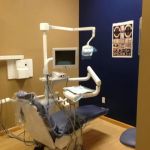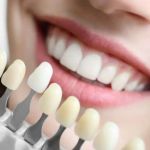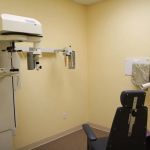How to Clean Teeth with Dental Tools: A Step-by-Step Guide for Proper Oral Hygiene
- 1. Understanding Dental Tools for Teeth Cleaning
- 2. Essential Dental Tools You Need to Clean Your Teeth
- 3. Step-by-Step Guide on How to Clean Teeth with Dental Tools
- 4. Common Mistakes to Avoid While Using Dental Tools
- 5. The Importance of Professional Teeth Cleaning
- 6. How to Maintain Your Dental Tools for Longevity
1. Understanding Dental Tools for Teeth Cleaning
We all know that brushing and flossing regularly is essential for maintaining oral hygiene, but when it comes to cleaning your teeth effectively, dental tools play a crucial role. As someone who has worked in dental care for years, I've come to understand how these tools can make a significant difference in the cleanliness and health of your teeth. The right tools can ensure that you’re not only removing plaque but also preventing gum disease and cavities from developing.
Dental tools range from basic items like toothbrushes to more advanced instruments such as scalers and curing lights. While you might be familiar with the traditional tools like toothbrushes, learning how to clean teeth with specialized dental tools can take your oral care to the next level.
2. Essential Dental Tools You Need to Clean Your Teeth
Using the correct dental tools can make all the difference in achieving optimal oral hygiene. As someone who has been using these tools regularly, I can say that having the right set of dental tools can help you clean your teeth more efficiently and thoroughly.
2.1 Toothbrush
The most basic and essential tool in your dental arsenal is the toothbrush. Whether you choose an electric toothbrush or a manual one, it’s important to brush your teeth at least twice a day. Electric toothbrushes have been shown to remove plaque more effectively than manual brushing. I personally switched to an electric toothbrush, and I noticed a huge improvement in the cleanliness of my teeth and gums.
2.2 Dental Floss
Dental floss is another essential tool for cleaning your teeth. While brushing is essential for removing plaque from the surfaces of your teeth, flossing allows you to get into the tight spaces between teeth and along the gumline where your toothbrush might not reach. I find that flossing daily helps prevent gum disease and cavities, especially between the teeth where food can get stuck.
2.3 Scaler
A dental scaler is a tool often used by dental professionals to remove tartar buildup from the teeth. If you’ve ever had your teeth cleaned at the dentist, you’ve probably experienced a scaler being used. While it’s not recommended to use a scaler yourself at home due to the potential for damaging the gums or enamel, you can purchase scaler tools designed for home use, but only under professional guidance.
2.4 Tongue Scraper
Often overlooked, the tongue scraper is a simple but effective tool for maintaining fresh breath and overall oral health. By gently scraping the surface of the tongue, you can remove bacteria that may contribute to bad breath. I’ve found using a tongue scraper to be a quick and effective addition to my oral care routine.
3. Step-by-Step Guide on How to Clean Teeth with Dental Tools
Now that we know which tools are essential for effective teeth cleaning, let’s walk through the step-by-step process of using them properly to achieve the best results. This process is simple but effective when followed correctly:
3.1 Step 1: Brush Your Teeth
Start by brushing your teeth using a fluoride toothpaste. If you're using an electric toothbrush, gently move it across your teeth, allowing the brush head to do the work. Be sure to brush for at least two minutes, reaching all surfaces of each tooth. I make sure to hold the toothbrush at a 45-degree angle to the gumline to effectively remove plaque.
3.2 Step 2: Floss Between Your Teeth
After brushing, it’s time to floss. Gently slide the floss between your teeth, making sure not to snap or force it, as this can harm your gums. Use a back-and-forth motion to clean both sides of each tooth. Flossing is essential for preventing gum disease, especially in areas where the toothbrush can’t reach. I personally make sure to floss at least once a day, especially before bedtime.
3.3 Step 3: Use a Scaler (If Needed)
While a professional cleaning is necessary for removing heavy tartar buildup, if you're looking to maintain good oral hygiene, a scaler can help remove light tartar between professional cleanings. Use the scaler gently along the gumline and on the teeth’ surfaces. Be sure not to apply too much pressure, as this can cause harm to your enamel and gums. I use the scaler occasionally but always ensure I’m gentle to avoid any damage.
3.4 Step 4: Scrape Your Tongue
Finish your cleaning routine by using a tongue scraper. Gently scrape the surface of your tongue from back to front. This will help remove bacteria that cause bad breath and improve your overall oral hygiene. It’s a step that’s often forgotten, but it really makes a difference in maintaining fresh breath throughout the day.
4. Common Mistakes to Avoid While Using Dental Tools
While cleaning your teeth with dental tools may seem straightforward, there are a few common mistakes that I’ve seen people make that can impact the effectiveness of their routine. Here’s what I’ve learned to avoid:
4.1 Using Too Much Force
Using excessive force when brushing, flossing, or scaling can lead to gum damage and enamel wear. It’s important to apply gentle pressure. I’ve made the mistake of brushing too hard in the past, which caused my gums to recede. Since then, I’ve learned to be gentler in my approach, ensuring I don’t cause any harm while cleaning.
4.2 Skipping Regular Check-Ups
Even if you’re consistently using dental tools at home, it’s important not to skip regular dental check-ups. Dentists can remove tartar that has built up over time, and they’re able to spot problems that may not be visible to you. I make sure to visit the dentist every six months to ensure my teeth are as healthy as possible.
4.3 Forgetting to Replace Tools
Replacing your toothbrush every three to four months is crucial. I’ve noticed that after a while, the bristles can lose their effectiveness. I also replace my floss regularly and make sure to clean my dental scaler to maintain its functionality. Regularly updating your tools ensures they work efficiently.
5. The Importance of Professional Teeth Cleaning
While cleaning your teeth at home is important, nothing beats the thorough cleaning provided by a dental professional. During professional cleanings, your dentist or hygienist will remove tartar that has built up over time, check for signs of gum disease, and ensure your teeth are in optimal condition. I always leave my dentist appointments feeling more confident in my oral health, knowing that my teeth are truly clean.
5.1 Preventing Serious Dental Issues
Regular professional cleanings help prevent cavities, gum disease, and other dental issues. They also give you a chance to catch potential problems early, saving you from more expensive treatments down the road. It’s something I never skip because the long-term benefits are clear.
6. How to Maintain Your Dental Tools for Longevity
To ensure your dental tools last and remain effective, regular maintenance is key. Here’s how I take care of my tools:
6.1 Clean Your Tools Regularly
After each use, I make sure to rinse and dry my dental tools thoroughly. This helps prevent the buildup of bacteria and ensures that the tools remain hygienic. I also store them in a clean, dry place to prevent damage.
6.2 Replace Worn-Out Tools
If you notice any tools starting to wear out—like frayed floss or worn-out toothbrush bristles—it’s time to replace them. Regularly updating your tools ensures they work efficiently and reduces the risk of injury to your gums and teeth.
If you’re looking for top-quality dental tools, visit Dentistry Toothtruth for a wide range of professional dental care products.







 Leila Zamiri DDS - Cherry Office4.0 (134 review)
Leila Zamiri DDS - Cherry Office4.0 (134 review) Bellevue Dentistry5.0 (150 review)
Bellevue Dentistry5.0 (150 review) Haddon Heights Smiles5.0 (336 review)
Haddon Heights Smiles5.0 (336 review) OMG Worcester Dentistry & Braces4.0 (9 review)
OMG Worcester Dentistry & Braces4.0 (9 review) Promenade Family Dentistry4.0 (12 review)
Promenade Family Dentistry4.0 (12 review) Loma Linda University School of Dentistry3.0 (154 review)
Loma Linda University School of Dentistry3.0 (154 review) The Importance of Oral Health Education During Pregnancy for a Healthy Pregnancy
The Importance of Oral Health Education During Pregnancy for a Healthy Pregnancy Best Tips for Brushing Your Teeth Properly for Healthy Gums: Essential Techniques for Oral Health
Best Tips for Brushing Your Teeth Properly for Healthy Gums: Essential Techniques for Oral Health Why Skipping Dental Checkups Can Lead to Bigger Oral Health Problems
Why Skipping Dental Checkups Can Lead to Bigger Oral Health Problems Advantages of Porcelain Dental Restorations
Advantages of Porcelain Dental Restorations How Can Diabetes Cause Tooth and Gum Problems? Preventing and Managing Oral Health Issues
How Can Diabetes Cause Tooth and Gum Problems? Preventing and Managing Oral Health Issues Healthy Habits for Promoting Good Oral Health and Hygiene: Tips for a Healthy Smile
Healthy Habits for Promoting Good Oral Health and Hygiene: Tips for a Healthy Smile